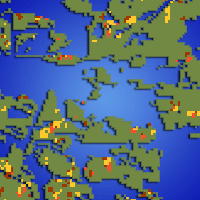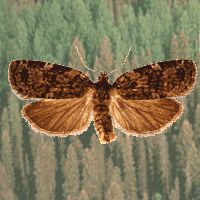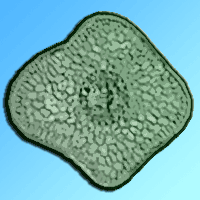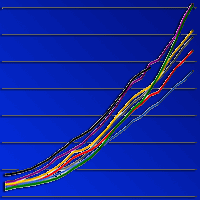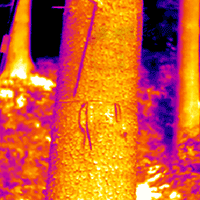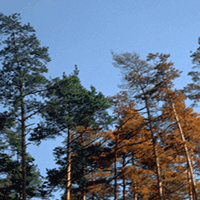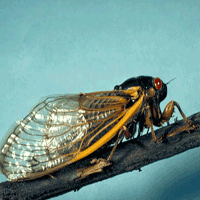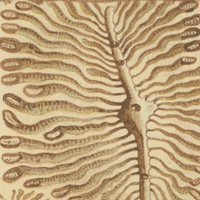
Landscape-scale Ips typographus attack dynamics: from monitoring plots to GIS-based disturbance models
R Jakus (1) , L Zajíčkova (2), P Cudlín (3), M Blaženec (1), M Turčani (2), M Ježík (1), F Lieutier (4), F Schlyter (5)
iForest - Biogeosciences and Forestry, Volume 4, Issue 6, Pages 256-261 (2011)
doi: https://doi.org/10.3832/ifor0589-004
Published: Dec 13, 2011 - Copyright © 2011 SISEF
Progress Reports
Collection/Special Issue: COST Action FP0903 (2010) - Rome (Italy)
Research, monitoring and modelling in the study of climate change and air pollution impacts on forest ecosystems
Guest Editors: E Paoletti, J-P Tuovinen, N Clarke, G Matteucci, R Matyssek, G Wieser, R Fischer, P Cudlin, N Potocic
Abstract
In natural spruce stands, a change of generation is usually initiated by wind or bark beetle disturbances. We combined semi-temporary monitoring plots, remote sensing, and GIS in order to understand and model these processes. Sub plots, called “active”, were located in areas with a high probability of bark beetle or wind disturbances. The optimal location of these plots is usually at an active forest edge, i.e., the zone of maximal change in bark beetle abundance over time, corresponding to the border between wind-damaged or bark beetle-attacked parts and undisturbed parts of a forest stand. The key variable investigated was tree mortality caused by bark beetles. Other variables were similar to those recorded in traditional forest monitoring. Tree defense indicators (resin flow, phenolic compounds) and reaction of a tree to bark beetle inoculation were measured. Terrestrial data were then combined with remote sensing data. Time series of satellite images were analyzed in order to define the pattern of wind and bark beetle damages. Weather monitoring data were used for predicting bark beetle and water stress development. All of the information was integrated in a GIS-based system and future bark beetle infestations were predicted. In this paper, we review previous studies and conclude that: (1) the hypotheses of habitat selection (non-host volatiles and semiochemical diversity) and location of moderately-stressed host trees are confirmed, although further work about olfactory orientation and host resistance is needed;(2) reactions of trees to bark beetle attack can be predicted by monitoring several parameters, e.g., air temperature and tree physiology; (3) data from ground monitoring can be integrated with GIS and remote sensing systems for bark beetle prognosis and management at the habitat and landscape levels.
Keywords
Authors’ Info
Authors’ address
M Blaženec
M Ježík
Institute of Forest Ecology, Slovak Academy of Sciences, Stúrova 2, 960 53 Zvolen (Slovakia)
M Turčani
Department of Forest Protection and Wildlife Management, Faculty of Forestry and Wood Sciences, Czech University of Life Sciences Prague, Kamýcká 1176, 165 00 Praha-Suchdol (Czech Republic)
Institute of Systems Biology and Ecology, Academy of Sciences of the Czech Republic, Na Sádkách 7, 370 05 Ceské Budejovice (Czech Republic)
University of Orleans, LBLGC, UPRES EA 1207, rue de Chartres, BP 6759, F-45067 Orleans Cedex 2 (France)
Chemical Ecology, Department of Plant Protection Biology, Swedish University of Agricultural Sciences (SLU), PO Box 102, SE-230 53 Alnarp (Sweden)
Corresponding author
Paper Info
Citation
Jakus R, Zajíčkova L, Cudlín P, Blaženec M, Turčani M, Ježík M, Lieutier F, Schlyter F (2011). Landscape-scale Ips typographus attack dynamics: from monitoring plots to GIS-based disturbance models. iForest 4: 256-261. - doi: 10.3832/ifor0589-004
Paper history
Received: Dec 23, 2010
Accepted: Apr 26, 2011
First online: Dec 13, 2011
Publication Date: Dec 13, 2011
Publication Time: 7.70 months
Copyright Information
© SISEF - The Italian Society of Silviculture and Forest Ecology 2011
Open Access
This article is distributed under the terms of the Creative Commons Attribution-Non Commercial 4.0 International (https://creativecommons.org/licenses/by-nc/4.0/), which permits unrestricted use, distribution, and reproduction in any medium, provided you give appropriate credit to the original author(s) and the source, provide a link to the Creative Commons license, and indicate if changes were made.
Web Metrics
Breakdown by View Type
Article Usage
Total Article Views: 60488
(from publication date up to now)
Breakdown by View Type
HTML Page Views: 49306
Abstract Page Views: 4775
PDF Downloads: 4845
Citation/Reference Downloads: 29
XML Downloads: 1533
Web Metrics
Days since publication: 5117
Overall contacts: 60488
Avg. contacts per week: 82.75
Citation Metrics
Article Citations
Article citations are based on data periodically collected from the Clarivate Web of Science web site
(last update: Mar 2025)
Total number of cites (since 2011): 15
Average cites per year: 1.00
Publication Metrics
by Dimensions ©
Articles citing this article
List of the papers citing this article based on CrossRef Cited-by.
References
Ips typographus (L.) and Thanasimus formicarius (L.) populations influenced by aspect and slope position in Artvin-Hatila valley national park, Turkey. African Journal of Biotechnology 8: 877-882.
Gscholar
Dynamics of tree attack in the bark beetle Ips typographus under semi-epidemic conditions. In: “Integrated control of scolytid bark beetles” (Payne TK, Saarenmaa H eds). Virginia Tech Press, Blacksburg, VA, USA, pp. 35-52.
Gscholar
Host selection by the pine engraver. Journal of Economic Entomology 41: 596-602.
Gscholar
Gehalt und emission von monoterpenen der fichtenrinde und deren bedeutung für die primärattraktion von borkenkäfern (Coleoptera, Scolytidae). Mitteilungen der Deutschen Gesellschaft fur Allgemeine und Angewandte Entomologie 11: 639-643.
Gscholar
Tree mortality in spruce: relationships between the premortal tree vigour dynamics and attack by bark-breeding insects. Mitteilungen der Deutschen Gesellschaft fur Allgemeine und Angewandte Entomologie 11: 645-648. [in German].
Gscholar
Effects of intensive versus no management strategies during an outbreak of the bark beetle Ips typographus (L.) (Col.: Curculionidae, Scolytinae) in the Tatra Mts. in Poland and Slovakia. Annals of Forest Science 63 (1) : 55-61.
CrossRef | Gscholar
Bark beetles in the Tatra Mountains. International research 1998 - 2005 - an overview. Folia Forestalia Polonica 52: 114-130.
Gscholar
Bark beetle (Coleoptera: Scolytidae) communities and host and site factors on tree level in Norway spruce primeval natural forest. Journal of Applied Entomology 119: 643 - 651.
Gscholar
Bark beetle (Coleoptera: Scolytidae) outbreak and system of IPM measures in area affected by intensive forest decline connected with honey fungus (Armillaria sp.). Journal of pest science 74: 46 - 51.
Gscholar
Definition of spatial patterns of bark beetle Ips typographus (L.) outbreak spreading in Tatra Mountains (central Europe), using GIS. In: “Ecology, survey and management of forest insects” (Mc Manus M, Liebhold A eds). Proceedings of the conference GTR NE-311, USDA Forest Service, Newtown Square, PA, USA, pp. 25-32.
Gscholar
Overview of development of anti-attractant based technology for spruce protection against Ips typographus: from past failures to future success. Journal of Pest Science 76 (4): 89-99.
CrossRef | Gscholar
Prognosis of bark beetle attacks in TANABBO model. In: “GIS and databases in the forest protection in Central Europe” (Grodzki W ed). Forest Reseach Institute, Krakow, Poland, pp. 35-43.
Gscholar
Analysis of causes and possible measures against mass dieback of spruce stands in border regions of north Slovakia. Final Research Report from the Project APVT-51-019302, Institute of forest ecology, SAS Zvolen, pp. 195. [In Slovak]
Gscholar
Thermal and other remote sensing of plant stress. General and Applied Plant Physiology 34: 19-32.
Gscholar
TANABBO model - A remote sensing based early warming system for forest decline and bark beetle outbreaks in Tatra Mts. -overview. In: GIS and databases in the forest protection in Central Europe (Grodzki W ed). Forest Reseach Institute, Krakow, Poland, pp. 15-34.
Gscholar
Field validation of phenolics as predictors of Norway spruce resistance to Ips typographus attacks during a finishing outbreak. In: Proceedings of the IUFRO Working Party Meeting “Forest insect population dynamics and host influences”. Kanazawa (Japan) 14-19 September 2003, pp. 14-19.
Gscholar
Influence of woody elements of a Norway spruce canopy on nadir reflectance simulated by the DART model at very high spatial resolution. Remote Sensing of Environment 112 (1): 1-18.
CrossRef | Gscholar
Spruce bark beetle (Ips typographus L.) infestation and Norway spruce status: is there a causal relationship? Silva Gabreta 8: 255-264.
Gscholar
Predisposition assessment systems (PAS) as supportive tools in forest management-rating of site and stand-related hazards of bark beetle infestation in the High Tatra Mountains as an example for system application and verification. Forest Ecology and Management 207 (1): 99-107.
CrossRef | Gscholar
Forest beetles. In: “Pheromones in non-lepidopteran insects associated with agricultural plants” (Hardie J, Minks AK eds). CAB International, Oxford, UK, pp. 113-148.
Gscholar
Untersuchungen zur populationsdynamik der fichtenborkenkäfer im nationalpark bayerischer Wald. In: “Nationalpark Bayerischer wald-25 jahre auf dem weg zum naturwald” (Biberlriether H ed). Passavia Druckerei GmbH, Passau, Germaby, pp. 88-110.
Gscholar
Prognosis model for stand development. Research Paper INT-137, Intermountain Forest and Range Experiment Station, USDA Forest Service, Ogden, Utah, pp. 40.
Gscholar
The results of manipulated experiments with inoculation of Ips typographus (L., 1758) to spruce trees under various levels of water stress. Journal of Forest Science 53: 25-30.
Gscholar
Bark beetle influencing on forest ecosystems. In: “Forest ecosystems in NP Sumava” (Vacek S, Krejči F, Grodzki W eds). Lesnícka Práce, Czech Republic, pp. 325-412.[In Czech].
Gscholar
The effect of drought on stem volume changes of Norway spruce. Scientia Agriculturae Bohemica (in the press).
Gscholar


